G. L. Pease
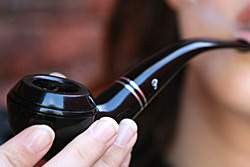 Happy New Year. I know. You don’t have to tell me. This is late. Very late. It should have been out in the middle of last month, but it wasn’t. Though I’m sure no one is really interested in my excuses, I’ll tender them anyway, just to make myself feel better.
Happy New Year. I know. You don’t have to tell me. This is late. Very late. It should have been out in the middle of last month, but it wasn’t. Though I’m sure no one is really interested in my excuses, I’ll tender them anyway, just to make myself feel better.
December was a zany month. Coupled with the weeks of my kid being off school, resulting in long days of Daddy Day Care, it was decided, not by me, mind you, that we at chez Pease should do more entertaining. This, of course, means my being enlisted to do the catering. Brunches, dinners, casual gatherings. For a while, it almost seemed as though I was cultivating something akin to an actual social life. I’m not complaining. I’m actually at my happiest creating menus, shopping for ingredients, prepping and cooking, selecting wines, and enjoying the company of friends and family, not to mention arranging a couple gatherings of a few comrades in briar with the commensurate puffing and puffery, plenty of music, libation and bench-racing. But, enough already!
My resolution for 2013 is to do more of this, though, hopefully, spread out somewhat, rather than having an entire year’s worth of socializing packed into a few short weeks. Now that we seem to have survived the holidays, and the zombie apocalypse, I hope everyone had a wonderful December, filled with life and light and love, and is refreshed and ready for a fabulous year to come. On to the questions.
John asks: I picked up an estate pipe a while ago, excellent condition, looks like it may never have been smoked. It was not expensive at all, probably not great quality – Aldo Velani – but it is beautiful. I can’t get a decent draw out of this thing. The stem is not clogged, as cleaners run through it easily enough. It seems like there is just not enough draft if that is the right word – like the stem was drilled too narrow or something? Ever come across this? Do you think it possible or worthwhile to have it looked at or try any home remedy? Thanks for any thoughts you may share.
A: A great question, John. Some pipes are simply made with small, tight airways. Rarely is it the shank itself; most often, it’s a constriction in the stem. In order to have a thin, comfortable bite-region, with sufficient material thickness to be durable, the hole drilled at this end can be quite small, even if it’s much larger at the tenon end. In order to present a more acceptable draught, this small diameter hole is funneled into an oblong shape, ideally maintaining close to the same cross-sectional area as the larger diameter part of the airway. If you imagine a soda straw, round at one end, but squeezed flatter at the other, you’d have an ideal airway, and this is more or less what most high-grade pipe makers try to accomplish. This is, of course, very time-consuming, and isn’t usually done in less-expensive pipes, especially those with molded, machine-made stems. The solution to the problem is to either have a new stem made, or have the original stem “opened” by a pipesmith. You can do the job yourself, if you’re up to it. There are articles on the net that describe the process in some detail. It’s not neurosurgery, but it does require an intimate knowledge of your tools, an understanding of the materials, and a steady hand, so if you’re not confident in your skills, it’s probably best to send it to a pro.
One of the seemingly infinite number of Kevins that read this column asks: The first 2/3 of the bowl always tastes great to me, but sometimes that final third gets kind of nasty. What’s up with that? I keep my pipes clean, and pack them carefully, but the nastiness still occurs. Is this just how it is?
A: There’s no law mandating that you have to smoke the whole bowl or have your pipe-smoker’s license revoked, and many veteran pipemen I’ve known do dump out that last bit before things go pear shaped. There’s no point in suffering through a nasty, acrid experience just to burn up that last little crumbs of dottle. In fact, I knew a guy who smoked nothing but vintage, well-aged Three Nuns, but only really enjoyed the first half of the bowl. Being a relatively rare and spendy commodity, he’d fill the bottom half with newly made stuff, then fill the top half with his vintage leaf, allowing him to enjoy the old, and dump the new. It was a bizarre approach, but it worked for him.
I do generally smoke to the bottom of the bowl, but am certainly not averse to dumping out the last bit if it begins to go afoul. Of course, ideally we do want to build an even cake to the bottom, and the only way to accomplish this is to smoke to the end. It’s a noble goal, but presents something of a bootstrapping problem, since a well caked pipe will tend to smoke better at the bottom, and if we keep dumping the last bit when it gets nasty, that cake will never develop. So, how do we get there?
Conventional wisdom tells us to break in our pipes from the bottom up, smoking third bowls until the cake begins to form, then 2/3 bowls, and, finally, full ones. Though it certainly makes some sense, it seems a bit fiddly and fussy to me, and those one-third-bowls never taste as good as a the first third of a full bowl, so, in a way, we’re still suffering a similar ill—smoking something we’re not enjoying as much as we should. Since I smoke for pleasure, and don’t want anything interfering with that, at least if I can avoid it, I tend break in my pipes the way I want to smoke them, filling them to the top, and smoking carefully until they’re done. From my own hedonistic perspective, it’s a more workable approach, and I actually enjoy breaking in new pipes.
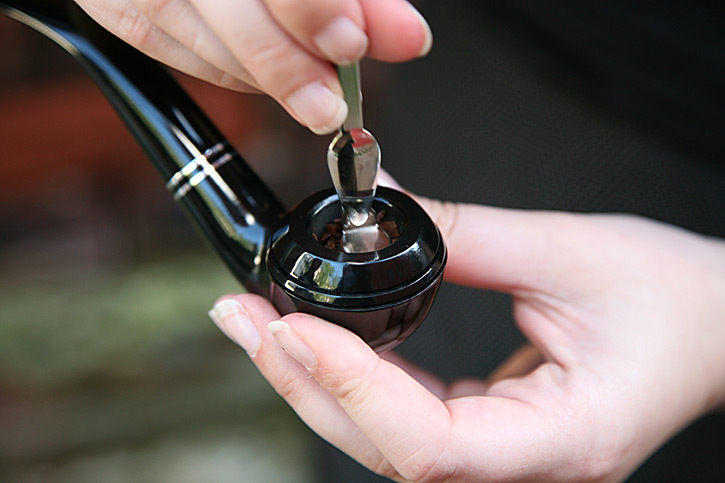
One thing that has helped me derive more pleasure from the last of the bowl, even in new pipes, is to reduce how often and how hard I tamp the ash. Like most smokers, I began by using the tamper too often, and with too much pressure, resulting in an increasingly dense, damp, hard-to-light plug of mundungus at the bottom of the bowl. I’ve learned to only tamp when necessary before relighting, and to only just touch the ash; the weight of the tamper is sufficient to do the job, and helps to keep things from being overpacked.
Ideally, it would seem that the tobacco towards the bottom of a properly filled pipe should be the loosest, which is hard to achieve with a “three-pinch” method, since the pressure used in each layer will increase the density of the tobacco below it. Further, as the tobacco burns, moisture will be produced, and this, especially in combination with heat causes the leaf to swell, so a pipe that’s packed “just right” initially can become too tight, making it harder to keep lit, and, worse, harder to relight when it goes out. I’ve taken the heretical approach of filling the bowl very loosely to the top, tapping the bowl to settle things down, then topping it up with tobacco mounded over the top and pressing it down just enough to get the right draw – a sort of “two-pinch" method. The draw still inevitably becomes somewhat more restricted as the smoke progresses, but on those rare occasions when I get it just right, the whole bowl goes relatively smoothly.
That said, some tobaccos, especially stronger ones, just don’t taste as good when they’ve “loaded up” with the moisture and distillates from the burning tobacco above, while others seem to get richer and more flavorful as the bowl progresses. The same thing is true in cigars, where some smoke wonderfully to the very nub, whilst others begin to get harsh and acrid in the final stretch. So, it may simply be the tobacco you’re smoking, and no amount of technique will fix it. The pipe never ceases to be a source of unsolved mysteries…
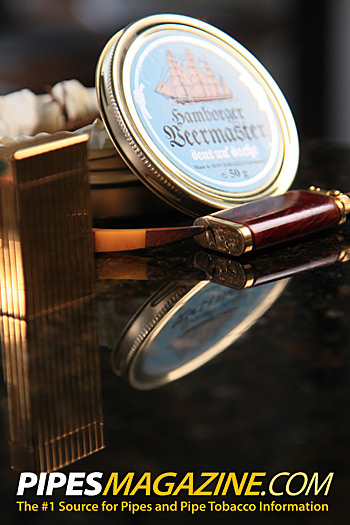 Another Kevin (I’m beginning to suspect some sort of conspiracy) writes: What’s the rule on pipe rotations and cleaning? I was given conflicting advice. One source implied that you should clean the pipe with pipe cleaners and let it sit for at least 24 hours after smoking one bowl. Another said you can keep re-filling the pipe all day, and then it has to be cleaned and rested for 24 hours. I usually follow the former, but have also done the latter with up to 3 – 4 re-fills with no problem. Does it depend on the pipe, tobacco, or how you smoke?
Another Kevin (I’m beginning to suspect some sort of conspiracy) writes: What’s the rule on pipe rotations and cleaning? I was given conflicting advice. One source implied that you should clean the pipe with pipe cleaners and let it sit for at least 24 hours after smoking one bowl. Another said you can keep re-filling the pipe all day, and then it has to be cleaned and rested for 24 hours. I usually follow the former, but have also done the latter with up to 3 – 4 re-fills with no problem. Does it depend on the pipe, tobacco, or how you smoke?
A: The answer is probably D: All of the above. I have pipes that are more tolerant of being smoked constantly than others, and some that will punish me if I smoke them twice without a fortnight’s rest between bowls. My general rule has been to smoke a pipe once, maybe twice, and then clean it well and rack it for a while, and I have always found the well rested pipes deliver the cleanest, sweetest smoke. But, I was talking with Larry Roush one day, and he insisted that I could smoke his pipes all day without problems, so I gave it a go, smoking my Pokerhawk a couple times a day for several days. I will say that it didn’t suffer much for this mistreatment, but the first bowl was definitely the best one.
Wet smokers will probably find their pipes souring faster than dry smokers, and, by extension, wet-smoking tobaccos will foul things faster than dry-smoking ones, so the type of tobacco smoked has a significant role to play in this equation. Personal preference must also be taken into consideration. I know guys who will smoke the same pipe day in and day out, and never seem to suffer any ills from it. Could be they know something I don’t… In any event, keep it clean and let it cool between smokes, and beyond that, whatever—works for you is right. Have I mentioned that the pipe never ceases to be a source of unsolved mysteries? Wait. I did. In response to another Kevin. It is a conspiracy!
Greg (no, it’s not me—I do ask myself questions, but rarely in public) asks: Can things like age or processing of the leaf increase its nicotine content? I’ve read several times that the nicotine content can be higher in aged tobaccos, but that just doesn’t make sense.
A: You’re right; it doesn’t make sense, because it’s just plain wrong. The tobacco plants synthesize nicotine within their root structures, which is then transported to and stored in the stalk and leaves. Once the plant is harvested and cured, its metabolic processes cease, onaccounta it’s dead. Expecting more nicotine, or any other metabolite, to be miraculously generated after the leaf is dead is like expecting a chicken to get up and dance, or lay eggs after it’s been spatchcocked and roasted. It’s not going to happen. In fact, since nicotine is somewhat volatile, any processing that takes place after the harvest is likely to reduce nicotine percentage, especially if heat is involved.
One possible explanation for the apparent increase in nicotine in aged leaf would be the result of an increase in pH due to chemical changes over time. The higher the pH (more alkaline), the more readily available nicotine in the smoke stream can be absorbed. If the aging of the leaf reduces sugars, the pH of the smoke will likely rise, increasing the bioavailability of Vitamin-N. But, this doesn’t always seem to be the case. I’ve often found aged tobaccos to be milder in effect, possibly the result of nicotine degradation over time. I’ve never had aged tobaccos sent out for analysis, so I’m only speculating there. Something for further research!
Yet another Kevin wrote: Is the pipe a phallic symbol?
A: Only if you want it to be. Sometimes, a pipe is just a pipe. Some of those ludicrously large cigars that are being made these days, on the other hand…
That’s it for this edition. Keep your cards and letters coming, as long as your name isn’t Kevin.
-glp
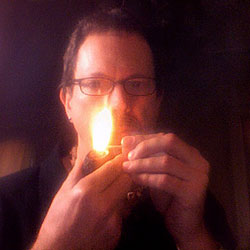 Since 1999, Gregory L. Pease has been the principal alchemist behind the blends of G.L. Pease Artisanal Tobaccos. He’s been a passionate pipeman since his university days, having cut his pipe teeth at the now extinct Drucquer & Sons Tobacconist in Berkeley, California. Greg is also author of The Briar & Leaf Chronicles, a photographer, recovering computer scientist, sometimes chef, and creator of The Epicure’s Asylum. See our interview with G. L. Pease here. |











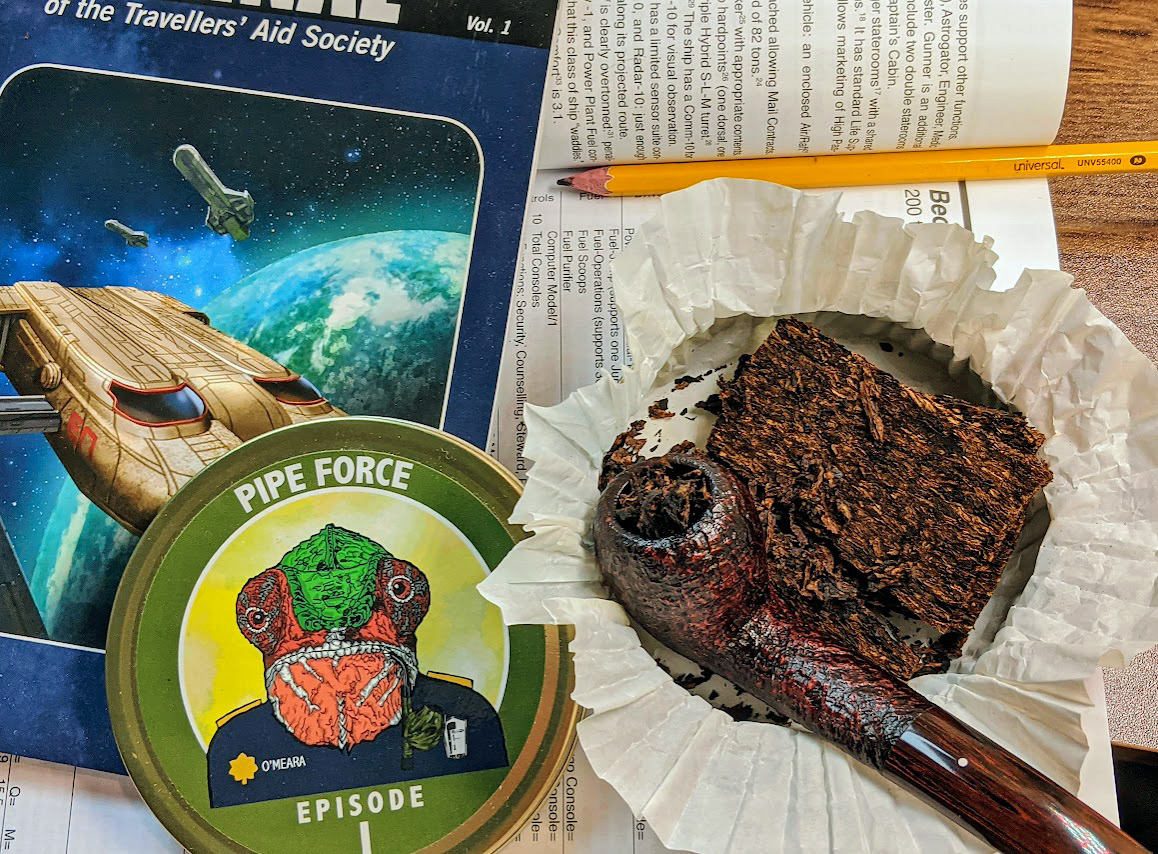






Thanks for another great read Greg, as always it was informative and humorous. It is nice to know that you break your pipes in the same way I do. I never saw the sense in doing it half way or in thirds because the top of the bowl will not develop a cake as quickly as the bottom. I have easily broken in over 100 pipes in my years of smoking them, and everyone has had a nice even cake built up using my method. I also enjoy breaking in new pipes, love the briar flavor at the end of the bowl.
I almost always smoke all the way to the bottom, maybe it is the blends I smoke(Virginia and Virginia/Perique Flakes) or the fact that I dump out ash a few times each bowl, but I find the flavors get more intense and better the lower I go. At least a couple of times a week I will suck in ash trying to get the last little bit of flavor. You would think I would learn not to do that after all these years, but I am a greedy bastard when it comes to flavor.
My experience with resting pipes is that at least one day for every bowl smoked in it. I generally rest them longer,but when I am breaking in a new pipe, I will smoke one bowl every other day for at least 3 weeks and the pipe gets broken in fairly quickly. I have never considered it a chore to break in a pipe, and I do like the taste of briar in the first however many bowls the flavor lasts.
Great article as usual. It should also be posted somewhere for newbie advice as it covers two common issues- how long to smoke a bowl, and how often to rotate.
Thanks!
Regarding the filling method, I’ve never had much luck with ‘three pinches’. One big pinch, loosely inserted. A few more scraps to build a top. Some fusiness with crumbs to make a surface. And as far as tamping is concerned, the best smokes are at the kitchen sink doing the dishes, when I cannot tamp.
Naturally my apartment mate is pleased with that last part.
Great article – well worth the wait & glad Greg had such an enjoyable change of pace over the holidays – lucky guests.
I have sometimes experienced some negative smoking characteristics during the latter part of a smoke with bowls that narrow at the base which tend to magnify anything from insufficient cleaning, ghosting and any negative tendencies the tobacco smoked has late on. Also when I smoke a bit too fast and hot (sadly all too frequently) this too can accentuate the negative qualities of a tobacco as the smoke draws towards its close.
I too had a problem with draw in the stem of a recently bought pipe. In this case the problem seemed to be with a distortion in the airway where it was bent as a pipe cleaner passed through it met resistance at the tenon end. Very fortunately another pipe I bought at the same time by the same maker came with two stems and one of those fitted the problem pipe perfectly – I suspect the maker had realised the bad stem was defective and made a replacement but somehow still sent off the defective stem and he, or the pipe shop, then mixed up the stems.